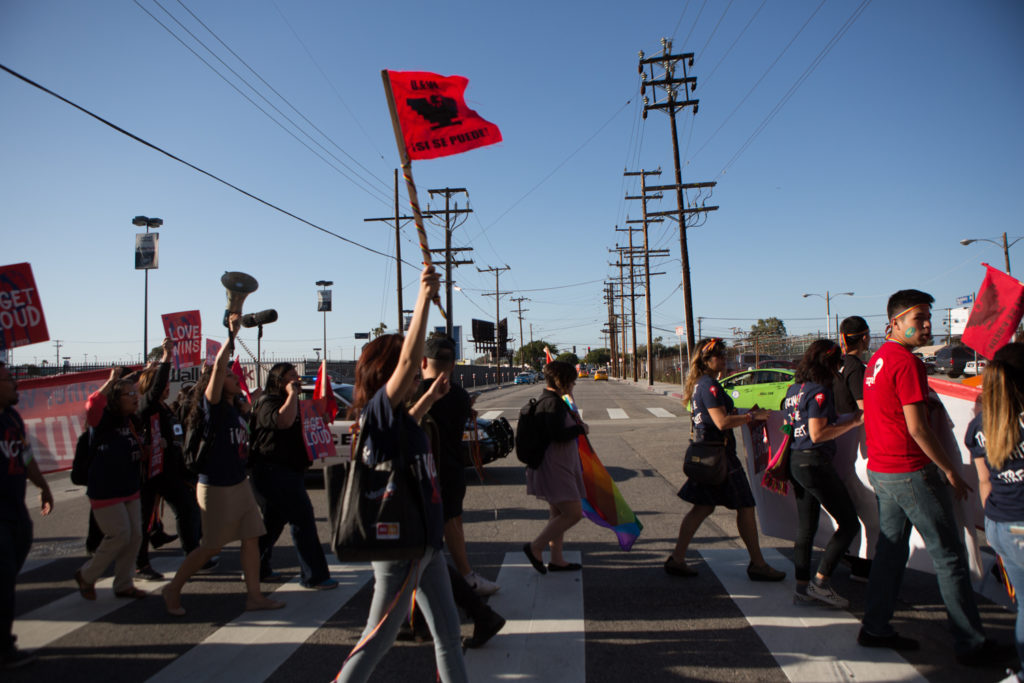Under the banner “Learning, Equity, and Power” (LEaP), the Center for the Study of Policy (CSSP) hosted a series of conversations sharing insights from The California Endowment’s 10-year, 14 community Building Healthy Communities (BHC) initiative. This conversation about BHC was facilitated by Anand Sharma, CSSP Senior Associate, and featured Sandra Witt, Managing Director of Power Infrastructure Statewide at The California Endowment, and evaluators Gigi Barsoum, founder and principal of Barsoum Policy Consulting and Julia Coffman, founder and co-director of the Center for Evaluation Innovation.
What follows are highlights of the conversation; to watch a recording of the full session, click here.
Anand Sharma (he/him) | CSSP: Sandra, please start by sharing a bit about The California Endowment (TCE) and the Building Healthy Communities (BHC).
Sandra Witt (she/her): TCE is a private, statewide health conversion foundation. Our mission is to expand access to affordable, quality health care for underserved communities and to promote fundamental improvements in the health status of all Californians. BHC has been a bold, billion-dollar initiative designed to promote healthy communities for all by building the power and voice of the communities that are most impacted by health inequities to advance policy and systems change for racial and health equity.
A core element of BHC is people power—building the power and voice of the communities—people closest to the pain as some of our community partners would say. We have been resourcing communities to organize, participate in, and shape the decisions that impact their everyday lives. I think at this point there have been something over 1,500 policy wins.
CSSP: Gigi, as a learning and evaluation partner to TCE, can you help us understand how you think about power building?
Gigi Barsoum (she/her): Through my work, I came to see power building as a reoccurring cycle. A cycle in which power is built and exercised, achieves an outcome, and is expanded. It is not done by individuals or organizations alone, but the cycle involves an entire ecosystem that centers communities. Grassroots organizing groups become very important because they engage and build the leadership and mobilize communities on community priorities. The capacities needed to build power include organizing advocacy, electoral and civic engagement, governing, narrative change, and adaptation.
Achieving outcomes reflects “having” power. Sandra referred to those 1,500 plus wins but it’s also about the losses because power can be built through losses. Moving beyond the outcomes we can often observe expanding power—how it shifted, changed, and increased. We saw this cycle exemplified in a number of issues BHC communities prioritized.
CSSP: Julia, as another learning partner, what you have learned about the role of advocacy in building power by studying BHC?
Julia Coffman (she/her): We at CEI, in collaboration with Gigi, looked at the role of advocacy in BHC and what it means for advocacy to build power. I’m a longtime advocacy evaluator, and this was a pretty transformative experience for me.
In my experience, foundations that support advocacy have historically measured success by whether the win or systems change has been achieved. They ask, “Did the campaign succeed in passing a new policy or was the campaign successful in getting a program funded?”
But, when the singular focus is on what it takes to win, that approach comes up short. Wins are vulnerable, they often come under attack when the political climate changes. If advancing racial equity and justice is the goal, then how we think about the success of advocacy also has to pay attention to what was won as well as how it was won. Does the win help to address racial disparities and their root causes? Were communities impacted by the problem involved and centered in the advocacy effort? It’s not just did the win happen, but what did the win look like and how did you get to that win. The ultimate measure of advocacy success is whether power was built as a result.
CSSP: Sandra, could you tell us more about the role of the program officer in this power building approach.
Sandra: Like many foundations, TCE has always wanted to listen to the perspectives of communities as it developed its programming. In BHC, there is a real change. Program officers were assigned to each of the 14 places, living in or close by their assigned communities. It created a different connection with the communities and the grantees that we have supported and come to know over the last 10 years. It helped us change.
There’s a lot of power dynamics in this work. It’s messy. But the long-term commitment to be in that relationship and figure out what’s needed, and how we, as a foundation can be more responsive, has been important for us. We learned that it’s not enough to be thinking about how we promote equity and how we think about structural racism in our communities, it’s also important to think about how we, as institutions, operate and how we may unintentionally perpetuate inequities.
CSSP: Thank you for sharing what you’re still grappling with and how messy this work can be. Gigi and Julia, you both referred to centering grassroots organizing groups. How should this influence philanthropic strategy?
Gigi: The Foundation played different roles under different conditions. It was very contextual based on the capacities and the window of opportunity. The Foundation could be more directive, or it took a backseat and just funded the work and supported the organizations. Gathering sufficient information to be more intentional with this approach can help funders in be stronger partners.
Julia: In BHC, the communities came to be the strategist—they were identifying the goals and how to get there. Strategy lived with communities. For the foundation, the strategy became how to make sure that the capacities existed and needed connections are occurring.
CSSP: Thank you all for this great conversation about Learning, Equity, and Power.
BHC has generated a broad and deep body of knowledge. For more information about TCE’s decade of learning, click here.
